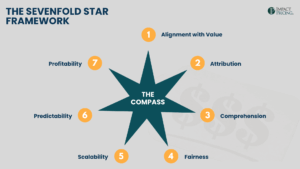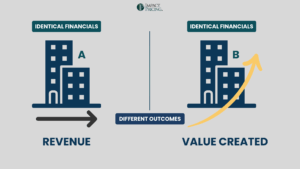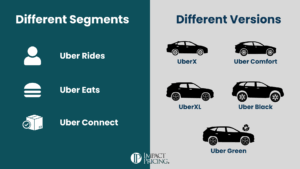You can listen to the full audio version of this blog we call — Blogcast.
During a recent podcast recording, Daniel Cho of Philips Healthcare gave a powerful example of Value Drivers. I thought it would be good to put them into the context of Value Tables.
As regular readers know, Value Tables have four columns: Solution, Problem, Result, and Value. The problem is often the hardest for sellers to describe effectively. We look for specific problems because they resonate more deeply with buyers. For example, we wouldn’t say, “My factory is inefficient.” Instead, we would say, “Our bottling machine is the bottleneck in our factory. It can only do 100 bottles per minute.” The latter more specific statement resonates with a buyer who has that problem. But the former more general statement encompasses more use-cases.
This is the fundamental difference between value tables and value drivers. Value tables are specific, while value drivers are broader but still more specific than the ultimate B2B goal of incremental profit.
I recommend starting with the value table—list as many problems you solve as possible. Then, write the results as the KPIs you can affect. You will likely find that many of these results are measured with similar KPIs. For example, in the bottling example, we may have a solution that can run 200 bottles per minute. That drives productivity. Then, what if we have a solution that reduces scheduled maintenance by 5 hours per week? That, too, drives productivity.
Both solutions’ results could be measured in bottles per week. We’ve got a value driver, productivity, supported by two specific solutions.
But who cares? All we’ve done is categorize results. Defining your value drivers provides a couple of significant consequences. First, your value drivers are high-level results. This is easier to speak to in marketing and sales. And, assuming you only identify 4 to 6 value drivers, they are easier for salespeople to remember.
Second, value drivers often correlate with specific buyer personas. If you sell bottling equipment to a factory, the COO might care about productivity. The HR team might care about the skill level required to operate it. The production manager might care about the training programs. The CFO and CEO absolutely care about the ROI. This gives sales and marketing guidance about what is important when communicating with different personas.
Similarly, you may find some customers who care about one value driver and others who don’t. For example, some companies care about sustainability, while others don’t prioritize it. If you have a value driver called sustainability, you only discuss it with buyers who care.
To go full circle, though, a value driver isn’t specific enough. When you tell a buyer we will make you more productive, they want to know how. For any value driver, you should be able to discuss the rows of the value table that justify your claims. Value tables show the results of solving specific problems. These resonate more deeply with your buyers but can overwhelm them if not tied to the value drivers they specifically care about.
I advise listing as many problems and results as possible in a value table. Then, categorize them into value drivers. You will likely find this easiest by looking at the KPIs you wrote in the results column. If you’d like some help, it’s what we do.
Share your comments on the LinkedIn post.
Now, go make an impact!
 Tags: buye, pricing, roi, value, value drivers, value table, value tables
Tags: buye, pricing, roi, value, value drivers, value table, value tables













